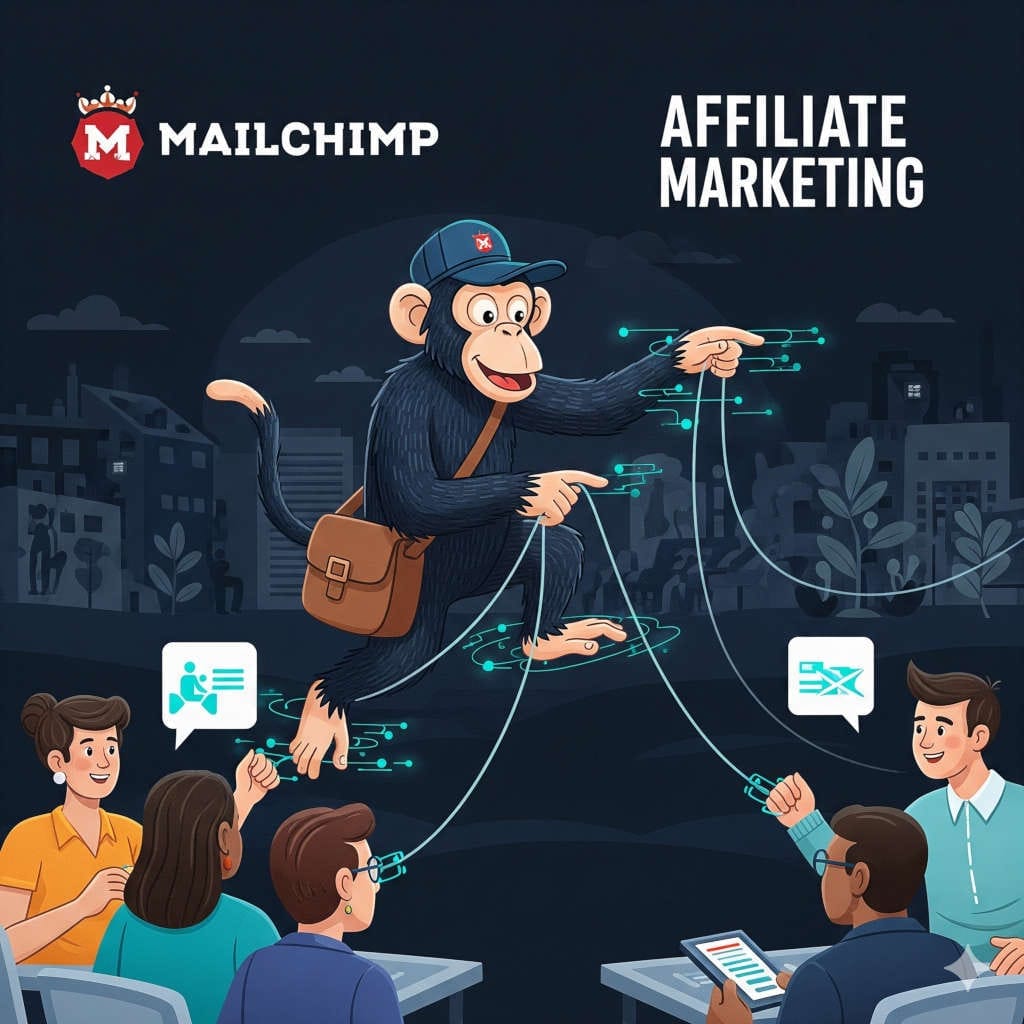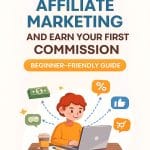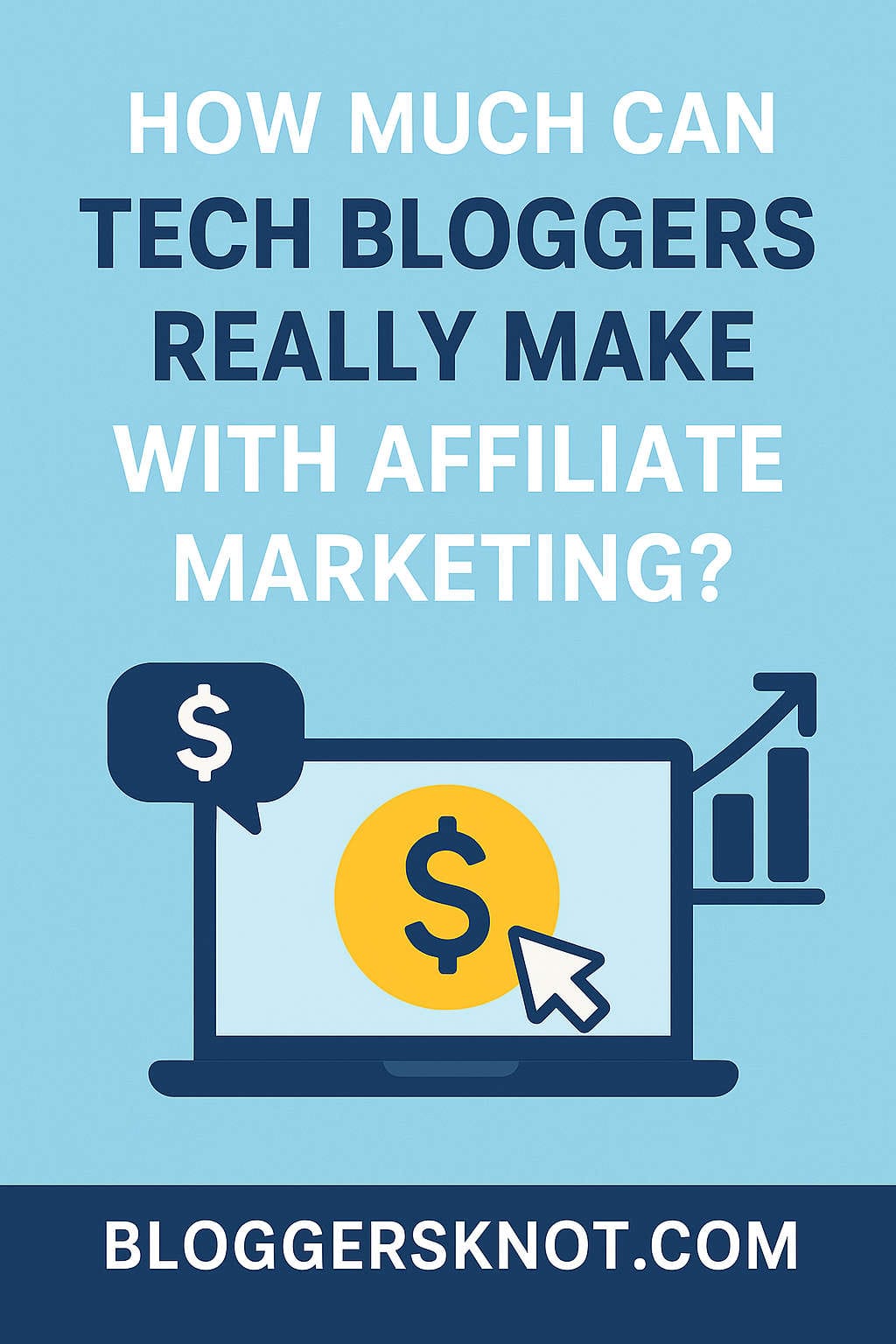I remember when I first stumbled across affiliate marketing back in 2018. Like many others, I thought it was some get-rich-quick scheme that only worked for internet marketing gurus. Boy, was I wrong! Fast forward to today, and affiliate marketing has become one of my most reliable income streams, with MailChimp affiliate commissions contributing significantly to my monthly earnings.
If you’ve been wondering whether MailChimp affiliate marketing is worth your time, or if you’re already convinced but don’t know where to start, you’re in the right place. This comprehensive guide will walk you through everything I’ve learned about building a successful MailChimp affiliate business, complete with real strategies, honest insights, and actionable tips you can implement starting today.
Why MailChimp Affiliate Marketing Should Be on Your Radar
Let’s start with some eye-opening statistics that convinced me to dive deep into email marketing affiliate programs. According to recent industry research, email marketing delivers an average return of $36-42 for every dollar invested. That’s not a typo – it’s genuinely one of the highest-performing marketing channels available today.
MailChimp sits at the forefront of this massive industry, serving over 13 million customers worldwide. What makes their affiliate program particularly attractive isn’t just their brand recognition, but their genuine commitment to helping small businesses succeed. When you promote MailChimp, you’re not just earning commissions – you’re genuinely helping entrepreneurs and small business owners grow their ventures.
Here’s what makes MailChimp affiliate marketing different from other programs I’ve tried:
Recurring Revenue Potential: Unlike one-time commission programs, MailChimp offers ongoing commissions for active subscribers during their first year. This means a single referral can generate income for months, creating a more predictable revenue stream.
High Conversion Rates: MailChimp’s freemium model allows prospects to try the platform before upgrading to paid plans. This significantly improves conversion rates compared to products that require immediate payment.
Strong Brand Trust: MailChimp has built remarkable brand recognition over the years. People trust the name, which makes your job as an affiliate much easier.
Inside MailChimp’s Affiliate Program: What You Actually Earn
Let me be completely transparent about the earning potential here. MailChimp’s affiliate program structure has evolved over the years, and understanding it properly is crucial for setting realistic expectations.
Current Commission Structure
As of my latest research, MailChimp affiliates can earn between $30-120+ per successful paid referral, depending on the plan your referred customer chooses. Here’s the breakdown I’ve observed:
- Essentials Plan: Around $30-50 commission
- Standard Plan: Approximately $60-80 commission
- Premium Plan: Can reach $120+ commission
What makes this particularly interesting is the recurring nature during the first 12 months. If someone you refer stays subscribed for the full year, you continue earning monthly commissions throughout that period.
The Reality of Affiliate Earnings
In my experience, building meaningful affiliate income takes time. During my first three months promoting MailChimp, I earned about $200 total. Not exactly life-changing money, but it showed the potential was real. By month six, I was consistently earning $800-1,200 monthly. Today, MailChimp affiliates contribute around $2,500-3,000 to my monthly income.
These numbers aren’t meant to impress you or set unrealistic expectations. They’re real figures that took consistent effort, strategic content creation, and genuine relationship building with my audience.
Your Step-by-Step Journey to MailChimp Affiliate Success
Phase 1: Getting Approved (Weeks 1-2)
The application process isn’t just a formality – MailChimp actually reviews applications carefully. Here’s what I’ve learned about increasing your approval chances:
Build Your Platform First: Don’t apply with a brand-new blog or empty social media profiles. Spend time creating valuable content that demonstrates your understanding of digital marketing and your ability to reach potential MailChimp users.
Focus on Quality Over Quantity: I’ve seen people get approved with smaller but highly engaged audiences, while others with large but inactive followings got rejected. Engagement and relevance matter more than raw numbers.
Demonstrate Marketing Knowledge: Your existing content should show you understand email marketing, digital marketing trends, or business growth strategies. MailChimp wants affiliates who can genuinely help their customers succeed.
Complete Your Application Thoroughly: Don’t rush through the application. Explain your promotional strategy clearly, be honest about your traffic sources, and show enthusiasm for the partnership.
Phase 2: Foundation Building (Weeks 3-8)
Once approved, resist the urge to immediately start promoting. Instead, invest time in building a solid foundation:
Deep Dive into MailChimp: Spend time actually using the platform. Sign up for a free account, create campaigns, explore automation features, and understand the user experience. You can’t effectively promote something you don’t truly understand.
Content Planning: Map out your content strategy for the next 3-6 months. What topics will resonate with your audience? How can you naturally incorporate MailChimp recommendations? What problems can you solve that MailChimp addresses?
Audience Research: Survey your existing audience or research your target market. What email marketing challenges do they face? What questions do they ask most frequently? This research will guide your content creation.
Phase 3: Strategic Content Creation (Ongoing)
This is where the real work begins, and it’s also where most affiliates either succeed or give up. Here’s my proven approach to creating content that actually converts:
Content Strategies That Actually Work
The “Teaching Through Example” Approach
Instead of writing generic “why you should use MailChimp” posts, I focus on teaching specific strategies using MailChimp as the tool. For example:
Instead of: “MailChimp is great for email marketing” I write: “How I increased my email open rates by 47% using MailChimp’s segmentation feature”
This approach provides immediate value while naturally showcasing MailChimp’s capabilities. Readers learn something useful, and MailChimp becomes the obvious tool to implement what they’ve learned.
Real Case Studies and Behind-the-Scenes Content
People connect with real stories and authentic experiences. I regularly share:
- Screenshots of my actual MailChimp campaigns
- Real performance data from my email marketing efforts
- Honest discussions about features I love and occasional frustrations
- Before-and-after comparisons when implementing new MailChimp features
This transparency builds trust and makes my recommendations feel genuine rather than sales-focused.
Problem-Solution Content Framework
I’ve found that addressing specific pain points yields the best results. Here’s my framework:
- Identify the Problem: Research common email marketing challenges
- Provide Context: Explain why this problem matters and its impact
- Offer the Solution: Walk through solving it step-by-step
- Use MailChimp: Demonstrate how MailChimp facilitates the solution
- Include Next Steps: Give readers clear actions to take
Interactive and Multimedia Content
Text-only content has its place, but multimedia dramatically improves engagement:
Video Walkthroughs: Screen recordings showing MailChimp features in action perform exceptionally well. I create 5-10 minute videos demonstrating specific features or walking through campaign creation.
Live Sessions: Monthly live streams where I build email campaigns, answer questions, and demonstrate MailChimp features in real-time. These create community and allow for immediate interaction.
Downloadable Resources: Templates, checklists, and guides that require MailChimp to implement effectively. These provide immediate value while naturally leading to affiliate conversions.
Advanced Promotion Strategies That Move the Needle
Building Your Email Marketing Ecosystem
Here’s an irony that works beautifully: using email marketing to promote email marketing tools. I’ve built an email list of over 8,000 subscribers interested in digital marketing, and it’s become my highest-converting traffic source for MailChimp referrals.
Weekly Newsletter: Every Friday, I send marketing tips, industry insights, and tool recommendations. MailChimp appears naturally when relevant, not in every email.
Email Course Series: I created a 7-day email marketing course delivered via email. Participants learn strategies while seeing MailChimp’s capabilities firsthand through the course delivery and examples.
Segmented Campaigns: Different subscriber segments receive tailored content. Small business owners get different MailChimp positioning than established marketers.
Social Media Strategy That Actually Converts
Social media for affiliate marketing requires a delicate balance. Here’s what works for me:
LinkedIn Strategy: I share professional insights about email marketing trends, comment thoughtfully on industry posts, and occasionally share detailed posts about specific MailChimp features or results.
Twitter Approach: Quick tips, engaging in marketing conversations, and sharing brief insights. Twitter works well for driving traffic to longer-form content where affiliate links live.
Facebook Groups: I participate genuinely in entrepreneur and marketing groups, answering questions and providing value. When MailChimp naturally fits the conversation, I mention it with my affiliate disclosure.
YouTube Channel: Longer-form tutorials and case studies perform well on YouTube. I create monthly deep-dive videos exploring email marketing strategies, often using MailChimp as the demonstration platform.
The Partnership and Collaboration Approach
One strategy that significantly boosted my affiliate income was collaborating with other marketers and content creators:
Guest Content: Writing guest posts for marketing blogs, appearing on podcasts, and contributing to industry publications. These expand my reach to new audiences likely to need email marketing solutions.
Joint Webinars: Partnering with other marketers to deliver educational webinars about email marketing, conversion optimization, or digital marketing strategy.
Cross-Promotion: Building relationships with non-competing affiliates and occasionally recommending each other’s content to our respective audiences.
Optimization Strategies That Multiply Results
Conversion Rate Optimization for Affiliate Links
Getting traffic is only half the battle. Converting that traffic into MailChimp referrals requires strategic optimization:
Link Placement Strategy: I’ve tested various link placements extensively. Mid-content links within tutorial sections consistently outperform footer links or sidebar placements.
Call-to-Action Optimization: Instead of generic “click here” links, I use specific, benefit-focused CTAs like “Start your free MailChimp account and implement this strategy today.”
Landing Page Testing: For major promotional campaigns, I create dedicated landing pages that pre-sell MailChimp before directing to their official site.
Content Performance Analysis
I track every piece of content’s performance using several metrics:
Traffic Analytics: Which content drives the most qualified traffic to MailChimp? I use Google Analytics with UTM parameters to track this precisely.
Engagement Metrics: Time on page, scroll depth, and social shares indicate content quality and audience interest.
Conversion Tracking: Which content pieces generate the most affiliate conversions? This helps me understand what resonates most with my audience.
Long-term Value: Some content continues generating conversions months after publication. Identifying these “evergreen winners” helps me create similar content.
Seasonal and Trending Content Strategy
Email marketing has seasonal trends I’ve learned to leverage:
January: New Year business resolutions content March-April: Tax season and business planning content September: Back-to-school and business quarter preparation November: Black Friday and holiday marketing preparation
Creating timely content around these themes, while naturally incorporating MailChimp recommendations, significantly boosts seasonal performance.
Avoiding Common Pitfalls That Kill Affiliate Success
The Over-Promotion Trap
Early in my affiliate journey, I made the mistake of mentioning MailChimp in nearly every piece of content. This approach backfired quickly. My audience noticed, engagement dropped, and conversions actually decreased.
The lesson: Promote only when genuinely relevant and valuable. My most successful content often doesn’t mention MailChimp at all, but builds trust and authority that makes future recommendations more powerful.
Ignoring Mobile Experience
Over 60% of my traffic comes from mobile devices, yet many affiliates optimize only for desktop. Every affiliate link, landing page, and piece of content must work flawlessly on mobile devices.
Failing to Build Relationships
Affiliate marketing isn’t just about transactions – it’s about relationships. I spend significant time:
- Responding to comments on blog posts and social media
- Answering email questions from subscribers
- Engaging genuinely in online communities
- Following up with people who’ve used my affiliate links
These relationship-building activities don’t directly generate immediate affiliate income, but they create the trust foundation that drives long-term success.
Neglecting Legal Requirements
FTC compliance isn’t optional, and the requirements have become stricter over time. Every affiliate promotion must include clear, conspicuous disclosures. I use language like:
“This article contains affiliate links, meaning I earn a commission if you purchase MailChimp through these links at no additional cost to you. This helps support my content creation while allowing me to recommend tools I genuinely use and believe in.”
Building Multiple Revenue Streams Around Your MailChimp Expertise
Creating Complementary Digital Products
As my MailChimp affiliate success grew, I developed related products that provide additional value while supporting my affiliate efforts:
Email Marketing Templates: Professionally designed email templates optimized for MailChimp, sold as downloadable packages.
Strategy Courses: Comprehensive email marketing courses that use MailChimp as the primary platform for implementation.
Done-for-You Services: Offering MailChimp setup and optimization services for businesses who want professional help.
Expanding to Related Affiliate Programs
MailChimp users often need complementary tools. I’ve added affiliate programs for:
- Design tools (Canva, Adobe)
- Analytics platforms (Google Analytics, Hotjar)
- CRM systems that integrate with MailChimp
- E-commerce platforms
- Landing page builders
This diversification provides multiple income streams while serving my audience’s complete needs.
Speaking and Consulting Opportunities
Establishing expertise in email marketing through consistent, valuable content has opened opportunities for:
- Paid speaking engagements at marketing conferences
- Consulting projects for businesses wanting email marketing strategy help
- Workshop facilitation for business organizations
- Brand partnership opportunities with marketing companies
Measuring Success and Scaling Your Efforts
Key Performance Indicators That Matter
I track several metrics to understand and improve my affiliate performance:
Revenue Metrics:
- Monthly recurring affiliate income
- Average commission per referral
- Customer lifetime value of referrals
- Revenue per piece of content
Traffic and Engagement:
- Organic search traffic growth
- Email subscriber growth rate
- Social media engagement rates
- Content consumption patterns
Conversion Metrics:
- Click-through rates on affiliate links
- Conversion rates from clicks to sign-ups
- Time between first click and conversion
- Content types that drive most conversions
Scaling Strategies for Long-Term Growth
As my MailChimp affiliate income grew, I implemented systems to scale without proportionally increasing time investment:
Content Repurposing: Each major piece of content becomes multiple assets – blog post, video, social media posts, email series, and podcast content.
Team Building: I now work with freelance writers who understand my content style and can create MailChimp-focused content under my guidance.
Automation Systems: Email sequences, social media scheduling, and content distribution happen automatically, freeing time for strategy and relationship building.
Partnership Development: Building relationships with other successful affiliates and marketers creates cross-promotion opportunities and collaborative projects.
The Long-Term Vision: Building Sustainable Affiliate Income
MailChimp affiliate marketing isn’t a get-rich-quick opportunity, but it can become a significant, stable income source with consistent effort and strategic thinking. My approach focuses on building assets that generate ongoing value:
Authority Building: Every piece of content establishes expertise and builds trust with potential referrals.
Relationship Investment: Genuine connections with audience members create loyal customers who return for advice and recommendations.
System Development: Scalable processes allow income growth without proportional time increases.
Diversification: Multiple traffic sources, content types, and related income streams reduce risk and increase opportunity.
Your Next Steps: Implementing This Strategy
If you’re ready to build your own MailChimp affiliate income, here’s exactly what to do next:
Week 1-2: Apply to MailChimp’s affiliate program while creating your first 5-10 pieces of valuable email marketing content.
Week 3-4: Get familiar with MailChimp by using it for your own email marketing. Nothing replaces hands-on experience.
Week 5-8: Implement your content creation schedule, focusing on solving real problems your audience faces.
Month 3-6: Analyze performance, optimize your highest-performing content, and scale what’s working.
Month 6+: Expand to complementary programs, develop additional products, and build partnerships.
Remember, affiliate marketing success comes from genuinely helping others succeed. Focus on providing exceptional value, being transparent about your affiliate relationships, and maintaining consistent effort over time. The income will follow naturally as you build trust and demonstrate expertise.
MailChimp affiliate marketing has become one of my most rewarding business ventures – both financially and personally. There’s genuine satisfaction in helping small businesses grow while building your own sustainable income. If you’re willing to put in the consistent effort and focus on serving your audience, this strategy can work for you too.
The email marketing industry isn’t going anywhere. If anything, it’s becoming more important as businesses seek direct communication channels with their customers. By positioning yourself as a trusted advisor in this space, you’re building a business with long-term potential and the flexibility to grow alongside industry changes.
Start today, stay consistent, and remember that every successful affiliate marketer began exactly where you are now. Your MailChimp affiliate journey starts with that first valuable piece of content. What will you create?






